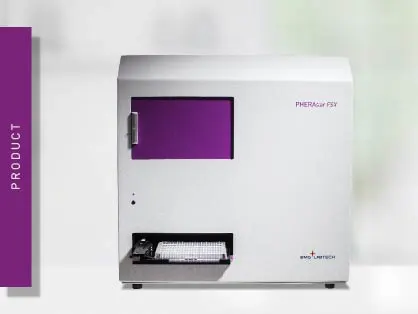
PHERAstar FSX
Powerful and most sensitive HTS plate reader


Cell-based assays are extremely useful to study targeted protein degradation. Learn about the different detection options and assays that support the discovery and development of protein degraders.
The multi-step degradation process of PROteolysis TArgeting Chimeras (PROTACs) poses a challenge for their rational development, as the rate-limiting steps that determine PROTACs efficiency remain largely unknown. Moreover, the slow throughput of currently used endpoint assays does not allow the comprehensive analysis of larger series of PROTACs. NanoLuciferase and HaloTag-based assay systems now allow measuring PROTAC-induced degradation and ternary complex formation kinetics and stability in cells.
In this scientific talk Martin Schwalm, University of Frankfurt, Germany, discusses how using PROTACs developed for the degradation of WD40 repeat domain protein 5 (WDR5), the characterization of the mode of action of these PROTACs in the early degradation cascade revealed a key role of ternary complex formation and stability. Comparing a series of ternary complex crystal structures highlighted the importance of an efficient E3-target interface for ternary complex stability. The presented assays outline a strategy for the rational optimization of PROTACs using a series of live cell and endpoint assays monitoring key steps of the early PROTAC-induced degradation pathway.

Martin Schwalm studied Biosciences and Biotechnology at the University Frankfurt with a focus on enzyme engineering. For his MSc, he worked at the Max Planck Institute for Terrestrial Microbiology (Marburg, Prof. Tobias Erb) in the field of synthetic biology and metabolic engineering for the generation of autotrophic bacteria strains as a basis for long-term directed evolution. In 2020, he joined the SGC Frankfurt and the group of Prof. Stefan Knapp as PhD student, focusing on the development of novel protein degraders and the design and establishment of in vitro and cellular assay systems for degrader profiling and characterization.
Powerful and most sensitive HTS plate reader
Most flexible Plate Reader for Assay Development